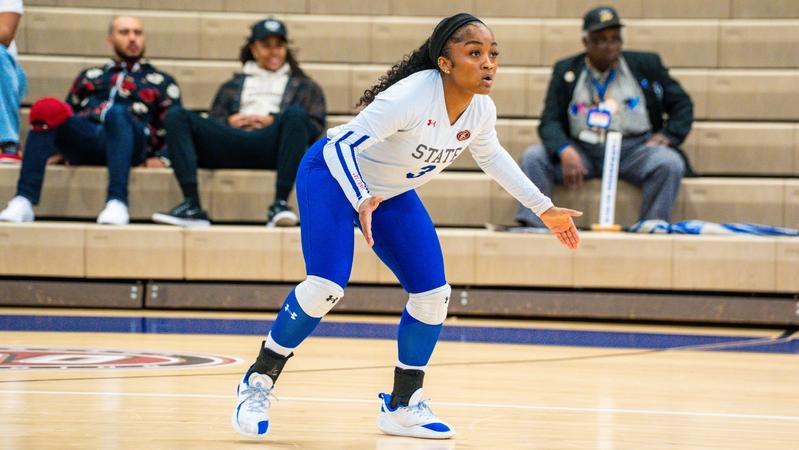The Baltimore Banner thanks its sponsors. Become one.
NIL
How Maryland's fastest high school sprinter scored a ground
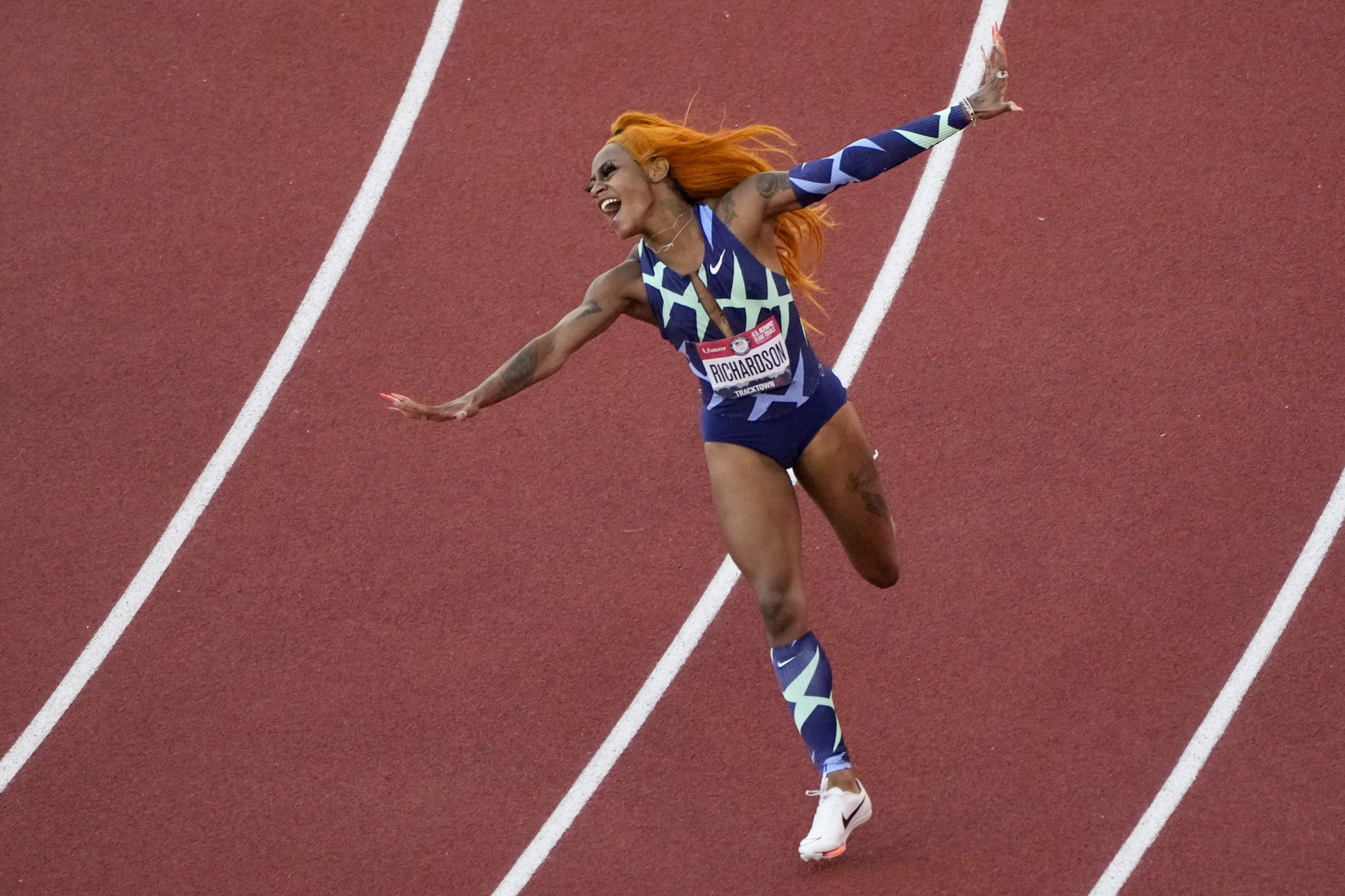
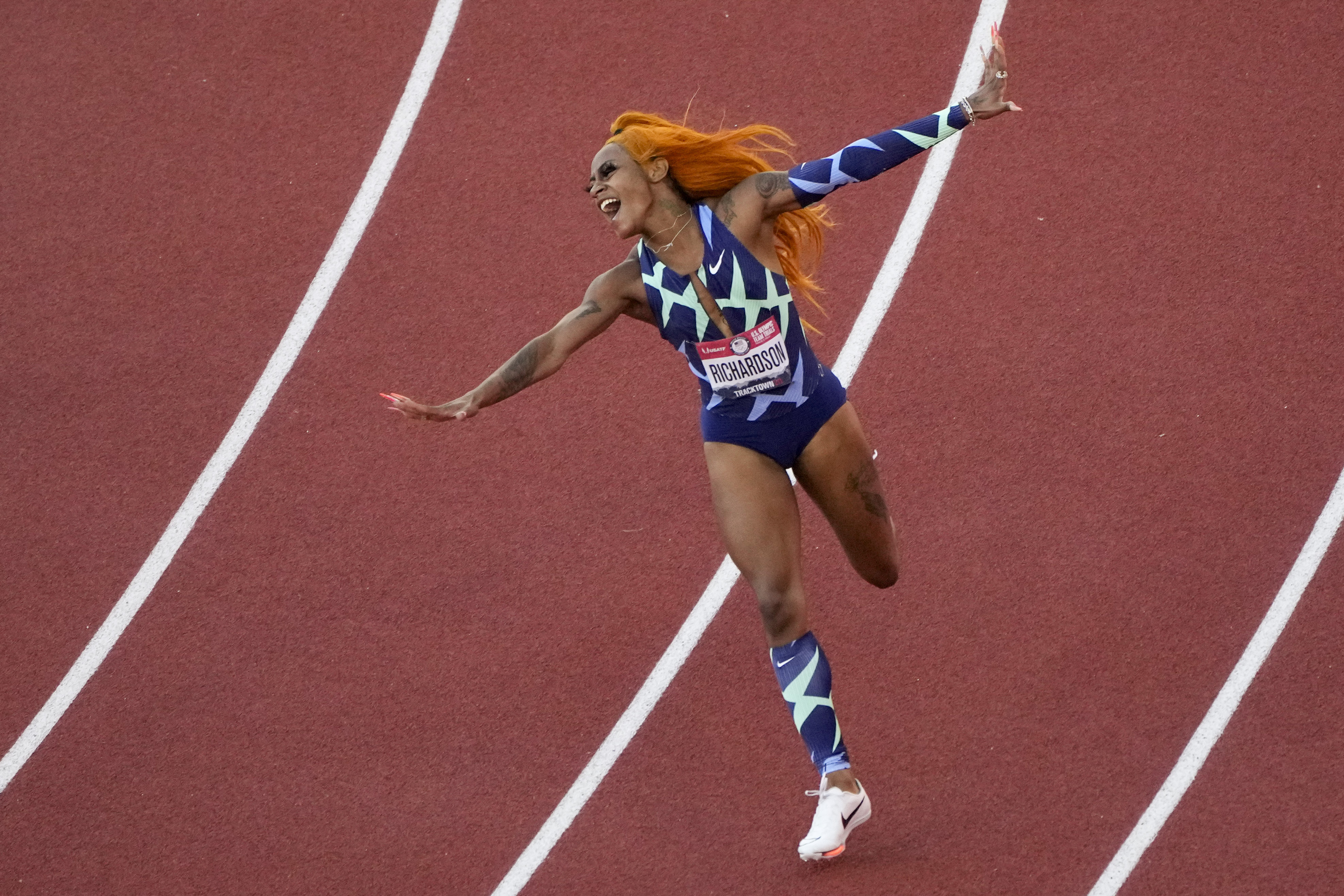
Elise Cooper will go to the Olympics one day.
The fastest high school sprinter in Maryland is one of the most promising racers the state has produced in recent years, setting a national record for the indoor 300-meter dash in February. She’s headed to Texas this fall on scholarship, and her dream of qualifying for the 2028 Games looms in the distance.
But, in the modern era of sports, with the money that floods the landscape, other goals arrive much faster — faster than a teenager is usually prepared for.
On her 18th birthday, Cooper signed her first name, image and likeness deal with Puma, essentially becoming a pro sprinter for one of the world’s biggest sports apparel companies on her first day of legal adulthood. Even before she signed, the outfitter had sent boxes of gear to her home in Owings Mills — all the free shoes, shorts and sweats the McDonogh School student could have imagined streaming through her door.
There was only one catch. Until the company announced the deal, she had to keep one of the most exciting things ever to happen in her career a secret from her closest friends.
For nearly three months this spring, the knowledge burned within her chest. At track practice, her teammates would notice her head-to-toe wardrobe from Puma, sniffing a deal was in the works.
Cooper’s strategy? Deny, deny, deny.
“I was low-key gaslighting them,” Cooper said. “I would just tell them, ‘I like wearing the stuff.’ It was longer than I thought. Way longer.”
In April, Puma finally made public what the Cooper family kept to themselves for what felt like an eon — Cooper was the company’s first high school sprinter signed to an NIL deal, a landmark move in a brand-new market. Only a few years ago, such young athletes would never have been allowed to profit off their athletic careers — and also compete collegiately — in the name of protecting the American curiosity formerly known as “amateurism.”
The Baltimore Banner thanks its sponsors. Become one.
It’s a new day for athletes and their families, who for the first time have the ability to cash in on NIL agreements that pay off years of hard work, even if they’re teenagers in high school. But it’s also a new, potentially treacherous marketplace with few regulations and even fewer experts who can give good advice.
For nearly two years, the Coopers considered various deals from some of the biggest companies in sports, holding out past offers of free gear, of flights to national meets and the prestige of being one of the first high schoolers to get signed.
Danielle Cooper — Elise’s mother, whom she lovingly calls her “mom-ager” — consulted dozens of parents, coaches, lawyers and industry pros in an effort not to get the most profitable deal for her daughter but the one that made the most long-term sense. Even the people she asked knew mostly one corner of the business. Almost no one is evaluating the bigger picture of a rapidly evolving landscape. What is a caring parent to do?
“Basically, no one knows,” Danielle Cooper said. “Even the people you think should know don’t really know. It’s really hard to go on.”
An uncharted economic frontier
It has been less than four years since NIL deals were permitted by the NCAA, a moment that stands as a starting pistol in a race toward economic chaos. Although the new system corrects flaws of the amateurism model by distributing more money into the pockets of the athletes who generate it, the clandestine nature and shadowy rules of the marketplace defy easy understanding for the families caught in the swirl. Especially for Olympic or so-called “non-revenue” sports.
The Baltimore Banner thanks its sponsors. Become one.
Bill Carter, the founder of Student Athlete Insights, hears NIL stories and questions all day long from families who haven’t thought much about the money before. A family of a highly rated lacrosse recruit recently went on a college visit during which an NIL collective offered their child $30,000 to enroll at that university.
The family had been largely considering other factors: academics, coaching staff, the program’s track record. Suddenly, they were ambushed by new questions.
Is $30,000 a good deal? Should we go to other schools and ask what their NIL offers are? Could we negotiate more money? Would that be too pushy?
“They left stunned,” Carter said. “They didn’t know whether it was the deal of a lifetime or an insult.”
While deciding whether to accept tens of thousands of dollars may be a good predicament to face, the families of these elite athletes are increasingly finding themselves in these positions. Markets have stabilized somewhat for Division I football and basketball players, and parents can more easily find what might constitute a fair NIL deal based on the school and the position their child plays.
The Baltimore Banner thanks its sponsors. Become one.
But in track the field of top-flight talent is so small — Carter estimates as little as 0.02% of even NCAA track and field athletes draw significant NIL interest — there isn’t any sort of conventional wisdom for how these deals should work.
Prep track meets are dominated by a few shoe companies, particularly Nike and New Balance, which annually run competing meets they each call “nationals.” Elise is running this weekend in the New Balance Nationals at Penn. She’ll be a top competitor in the 200 and 400 meters — largely because it’s easier to drive to Philadelphia than it is to fly to Eugene, Oregon, where Nike stages its event.
The first NIL deals the Cooper family heard about were stipends, around $1,000 or so, from these companies to cover the cost of travel and lodging for their big meets, drawing elite competition into the field. These are typically accompanied by flattering social media posts and, of course, complimentary gear.
For a teenager, a pair of free shoes is a sweet siren song. Elise figured she should start her strides into the NIL market by taking one of the short-term agreements. Danielle was not as convinced, especially after talking to a family friend who has worked as a sports agent.
“It was my mom who talked to other people and made the decision to hold out,” Elise said. “I kinda wanted stuff now, but I started to understand more after doing more research. NIL’s always evolving, so I’ll never fully understand it.”
The Baltimore Banner thanks its sponsors. Become one.
Confusing by design
The confusion around NIL deals, especially at the high school level, is not by accident. It’s by design.
The Maryland Public Secondary Schools Athletic Association offers a seven-page NIL guidance that has one key rule: When an athlete makes a deal, they cannot be wearing their high school uniform or use content captured from high school competitions. The regulations mainly serve to keep the MPSSAA separate from the economic frenzy.
Carter said that is a common approach by high school associations across the country. They are most concerned with keeping themselves, and their intellectual property, apart from the NIL chase — what he describes as a legal “moat” around the schools. The list of “do-nots” can help the associations, but it rarely offers much help to families.
“The conversations people frequently have around NIL are almost entirely viewed through compliance or almost entirely viewed through seizing the opportunity — but those conversations rarely converge,” Carter said. “It’s so rare they come together, even though that would benefit the athlete the most.”
The way anyone learns anything about NIL is by exhaustively asking around. Not everyone is lucky enough to have Danielle Cooper as a mom or Owings Mills Track Club coach Michael Ray as a supporting resource.
The Baltimore Banner thanks its sponsors. Become one.
Ray and the Coopers made it their mission to get as much guidance as possible. They talked to Quincy Wilson, the Bullis School standout who won a relay gold medal at 16 last year in Paris (he signed with New Balance). They spoke with the Whittaker family, whose daughters Juliette and Isabella both went to the Olympics last year. They spoke to coaches and employees affiliated with brands, trying to figure out what the structure of a fruitful long-term deal would look like.
But even knowing the framework (not necessarily the dollar value, which can be hard to fish for, even among friends) of some of these deals helped only somewhat. In track, value can be extremely subjective, and even more so for a high schooler who, although she has run in the Olympic Trials, has not captured the international success that others with deals already have on their résumés.
“Because it hasn’t become commonplace, you’re really setting the journey that’s brand new,” Ray said. “There’s no standard deal. They might have an idea of what your value might be, you might have a totally different idea, but there’s no template. It’s hard being the first.”
Athletes and their families are not the only ones taking timid steps into the market. The brands themselves have spent the last few years trying to figure out the best way to get in on high schoolers, too.
José (pronounced “yo-say”) van der Veen, Puma’s global head of product line management, ran middle distances in her native Netherlands before going to the University of Texas El Paso in the late 1990s. She had a small regional deal with Puma that she had to give up because of NCAA rules — “I was a little bit bummed at the time,” she said — so she appreciates how quickly the circumstances have changed.
Puma fancies itself a youthful and energetic brand, capitalizing on the colorful personalities of gold medal-winning sprinters like Usain Bolt and Julien Alfred as its spokespeople. While Nike and other brands were quick to jump into exploring high school NIL deals, Puma was more circumspect. There were so many differing state regulations, so few certainties in investing in athletes so young.
“It’s uncharted,” van der Veen said. “For our in-house lawyers, it’s a space we want to be fair and be a little cautious. But the market, that’s where it’s moving to. You obviously have to go there because other brands are going there.”
Elise Cooper was a good candidate for Puma because she’s fast, first and foremost. But it’s also no accident that the brand wanted a candidate with the kind of support system Elise has in her corner.
Her parents were both athletes, and both her sisters are track stars, too (twin sister Elena is heading to Stanford, while older sister Ella competes for Harvard). She’s competed for Owings Mills Track Club under Ray for more than a decade, and Ivy League schools recruited her for her academic prowess before she committed to the Longhorns.
With high school athletes especially, companies want good long-term investments when they bring a teenager into the fold.
“The line to become professional athletes, it’s not linear,” van der Veen said. “Elise seems to have a very good support network around her. If she gets injured, if something happens, she’s smart enough to figure out it won’t define her. … At the highest level, the talent of these athletes eventually becomes pretty similar. It comes down to how mentally tough you can be.”
How a deal came together
The day Elise Cooper set a national record was unusual not because there was some electric feeling in the air leading up to her run — it was the opposite.
Cooper was at The Circuit in Philadelphia on Feb. 28, the day before the meet started in earnest. In the video, there is almost no one in the stands. She was racing against her friend Sydney Sutton from the Bullis School.
Cooper came into the race hoping for a personal record, but she did not imagine smashing Shawnti Jackson’s record by more than three-tenths of a second — a massive gap in the blink-length margins of sprinting.
“I guess I felt fast,” she said. “But I looked at the clock and I was like, ‘Oh my God!’”
Although Cooper prides herself on her ability to perform under pressure, one of her best runs ever came in one of the most low-stakes races of her career. But the days of racing in front of empty stands are numbered, and even more is on the line now that she’s under her first pro contract.
Track deals, maybe even more than those in other sports, are laden with incentives. Athletes get bonuses for reaching PRs, for clocking under certain times, for winning big meets. Although the Coopers did not share all details of Elise’s contract with The Banner, her deal with Puma — as well as future extensions she hopes to sign — have some of these incentives.
The unusual thing about track deals, however, is also the potentially hazardous piece: Sometimes, athletes who get hurt or don’t meet specific goals end up giving money back to their sponsors. Ray has seen it happen with other athletes he’s coached.
There are so many inherent tensions with signing track stars in their teens, it can be hard to decipher what kind of business arrangement makes sense.
“You at least have to look at it with an eye toward the future and what the individual athlete might accomplish,” Ray said. “A good deal in 2025 might not be a good deal in 2026 if you go to college and set the world on fire.”
Trying to be mindful of all of these factors, the Coopers sought a deal with a company that could mature over time. Puma wasn’t the only brand they considered. They liked On Running, a relative upstart from Switzerland founded in 2010, but the company didn’t have as long a track record with sprinters as Puma did. Ultimately, the relationships with the company and the Puma spikes themselves helped seal the Coopers’ decision to sign.
“A lot of people were saying, ‘This is the shoe she’s going to run in if she goes to the Olympics in 2028,’” Danielle said. “So that got in my head, and I was like, ‘Well I really do like On as a brand.’ But then … you’re gonna have to wear that shoe.”
The red carpet treatment from Puma felt particularly special for the Coopers, who traveled to the company’s American headquarters in Boston together. Elise tried out new gear, saw shoes in development that won’t be released for years, and had her feet closely measured for potential custom work down the line.
Puma is a Formula 1 racing sponsor, and Elise (who is a huge fan of F1) could be attending the Grand Prix in Texas in October as a special guest of the brand. A flight to the company’s world headquarters in Germany is sometime in the future.
But with all the perks comes pressure. Danielle has emphasized to Elise that she has to start thinking of track in more serious terms. No late nights cavorting in her friends’ hotel rooms before a big race. Although Elise will wear Nike gear when she competes for Texas under the school apparel deal, she’s contractually obligated to wear Puma at all other events (Ray bought Puma gear for himself as a show of solidarity).
For the previous 10 years, track was Elise’s passion. She still loves it, but now it’s her job.
“I think, when she saw the contract,” Danielle said, “it was when she realized, ‘OK, this is the real deal.’”
Everything on the line
Since she was 7, the sound of the starting gun has always given Elise a jolt.
It’s a little burst of fear that has never fully gone away — a tic that annoyed Elise when her mom pointed it out to me. “OK, first of all, that wasn’t even relevant,” she said, rolling her eyes in Danielle’s direction.
Danielle dotes on her daughters, and while Elise sometimes teases that the parenting style can feel over the top — Danielle has a running gag that she will buy an RV next year to drive to her daughters’ various meets — she ultimately embraces her mom’s dedication to her career. On her notes app on her phone, there’s a long to-do list of things she wants Danielle to accomplish.
“Not even halfway finished,” Elise playfully jabbed. “Wow, look at that.”
As much as she can push back on her mom’s devotion, she deeply appreciates the fact she probably would have never landed the deal with Puma without that level of diligence. Having a parent who can do this much legwork is a luxury not every athlete has.
Carter said the one piece of advice he would give every family trying to navigate the NIL market is to have patience. If a deal is on the table, there’s a good chance it will stay there for weeks or months. He estimated 90% of the regrets he hears from people are that they pounced too quickly.
“I would tell anyone to slow down and think about the ramifications of it before you sign it,” he said. “Spend a little bit of time thinking about who might help you: an attorney, someone to review the contract, a financial adviser. Get their input, and move through the process slowly.”
The market could help athletes and families by stabilizing and adding regulation. As the NCAA moves into revenue sharing, there’s a sense that NIL will become less important to the overall economics of sports — and companies would welcome some corralling from the Wild West the space is now.
It reminds van der Veen of the chaos in the late 2010s when “super spikes” hit racing and led to records all over getting slashed. Over the next few years, regulating bodies stepped in, other companies caught up and the field evened out again. She hopes the forces overseeing NIL in the NCAA and high schools have a similar flattening effect soon.
“I know the coaches are getting together right now, saying, ‘Hey, we really need to protect these Olympic sports,’” she said. “I really think, in the next couple of months, you’ll see pushback against the rules, more regulation of it. It will get more established and clearer.”
But it’s also likely that elite track athletes like Elise Cooper will always be a kind of outlier, that there may never be one template for the best deal or partnership that makes the most sense or carries the least risk. There may be less than a dozen high schoolers in any given year with the talent to attract contracts from big companies, and their families will always have steep learning curves in the short window that such deals are available.
What helps the Coopers is how independent Elise is when it comes to the races. She warms up and prepares on her own, mentally envisioning the race — tamping down her quickening pulse as she awaits that sharp bang of the starting gun that has never quite lost its intimidating bite.
“The difference between her and other athletes for me is she’s always able to get race ready on her own,” Danielle said. “She’s never needed me for the race. She’s always been independent in her preparation.”
There’s more on the line now than ever for Cooper, an axiom for her career from here until (at least) she shoots for Olympic gold in 2028. But the list of goals she has are all about her PRs — not about her salary, college or world titles or even earning all the free shoes in the world.
That’s why those around Elise see the Puma contract not as the conclusion to a saga but merely another step. That’s what everyone is hoping for.
“You see when the kids get serious about it and what that means for the sacrifices they make for themselves,” Ray said. “Usually the motivator is something beyond money. They really want to be the best of the best.
“Elise,” he added, “is one of those people.”
NIL
Predicting Landing Spots for College Football’s Top 50 Transfer Portal Players
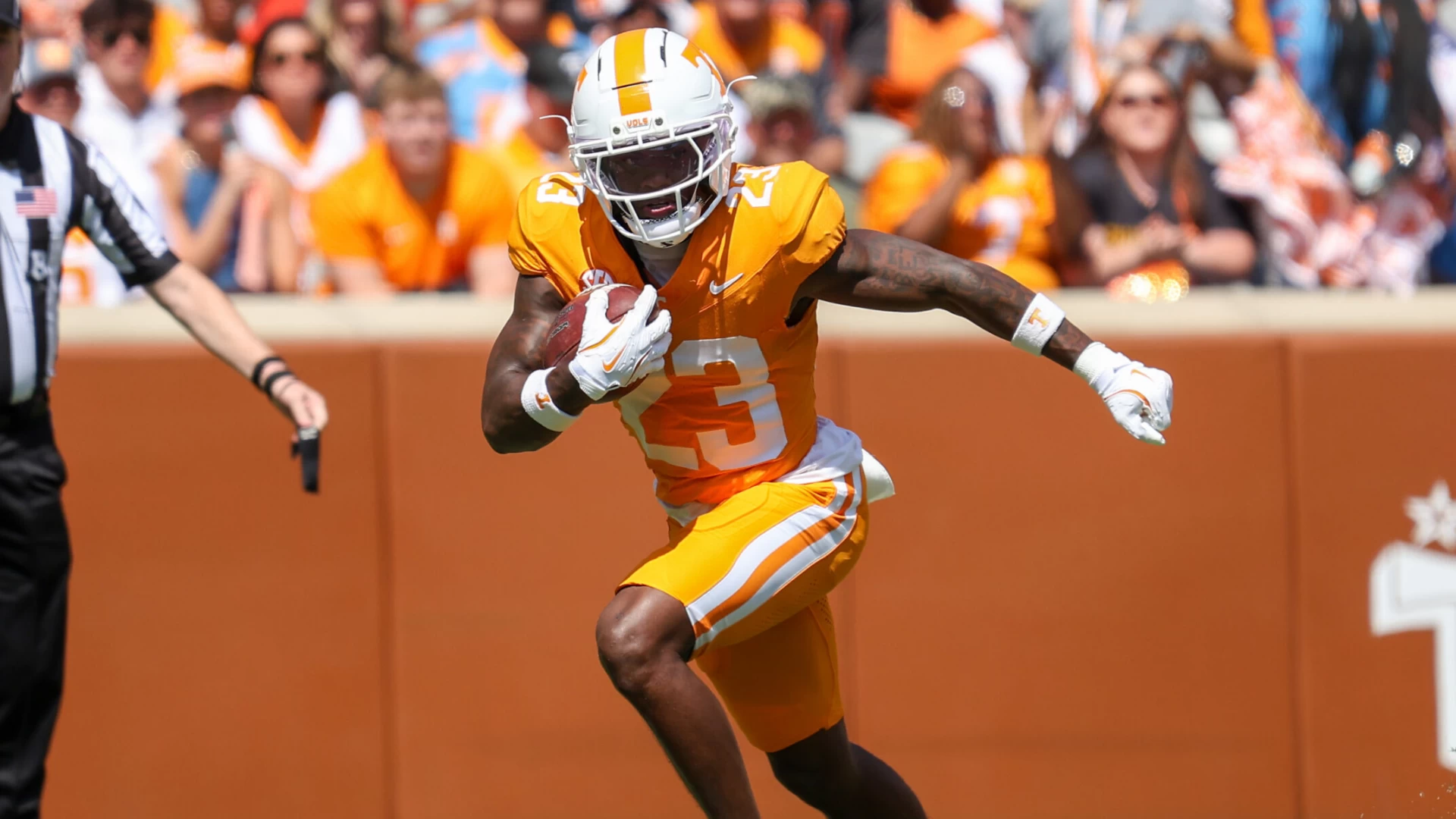
Forecasting landing spots for the top 50 transfer-portal stars as teams hunt immediate impact, plug roster holes, and reshape their 2025 contenders for 2025 now.
Have all the intel you need? Free, actionable information is just one click away! Sign up for our daily newsletter, SportsGrid Daily.
1) WR Cam Coleman, Auburn
Cam Coleman immediately becomes the top player in the transfer portal after making his intent to split from Auburn clear. The former five-star has totaled 1,306 receiving yards and 13 touchdowns in two seasons with the Tigers, proving to be one of the lone bright spots for the struggling SEC squad. Coleman will have several contenders interested in his services, and with a robust market to choose from, expect the talented wideout to land a top NIL deal.
Prediction: LSU
2) EDGE Chaz Coleman, Penn State
Chaz Coleman adds his name to the transfer portal after spending this past year as a true freshman at Penn State. The six-foot-four pass rusher racked up eight total tackles, one sack, a pass defense, and a forced fumble in a limited role with the Nittany Lions. Coleman will have an abundance of suitors on the market, with several contenders willing to make a big push for his services.
Prediction: South Carolina
3) QB Sam Leavitt, Arizona State
Sam Leavitt becomes arguably the top prospect in the transfer portal after announcing his decision to depart from Arizona State one season after leading the Sun Devils to a Big 12 Championship. In two seasons at ASU, Leavitt has totaled 44 touchdowns and only three interceptions, proving to be one of the best quarterbacks in the nation. Expect Leavitt to have an abundance of top contenders pursuing him with the chance to land a major NIL deal in the portal.
Prediction: Miami
4) RB Caleb Hawkins, North Texas
Caleb Hawkins took the nation by storm as a freshman this past season at North Texas, rushing for 1,434 yards and 25 touchdowns in the Mean Green’s offense. The six-foot-two running back not only proved to be a highlight waiting to happen, but he made it clear that he can be the bell cow in an explosive offense. With his intent to enter the transfer portal announced, Hawkins will immediately become a top target for several contending teams.
Prediction: Texas Tech
5) QB Dylan Raiola, Nebraska
Dylan Raiola’s decision to enter the transfer portal comes just weeks after Nebraska fired offensive line coach Donovan Raiola, who is also the star quarterback’s uncle. The writing was on the wall for the former five-star to depart from the program following the move, especially when factoring in the back-to-back lackluster seasons for the Cornhuskers through Raiola’s first two years. The dynamic quarterback will have several suitors as he’s a marquee name on the market.
Prediction: Oregon
6) QB Brendan Sorsby, Cincinnati
Brendan Sorsby began his college career at Indiana, where he spent two seasons before transferring to Cincinnati. The dual-threat quarterback put his name on the map this past year, leading the Bearcats to the best season in recent years, while combining for 36 total touchdowns (27 passing and nine rushing). Sorsby may not be a team’s top option with the names above him available, but he’ll undoubtedly be in the mix to land with a contender, especially if they miss out on the top three names.
Prediction: Texas Tech
7) QB DJ Lagway, Florida
DJ Lagway becomes a significant addition to the transfer portal after announcing his intent to seek a fresh start following yet another underwhelming season at Florida. The former five-star recruit seemed committed to the Gators, even after the departure of head coach Billy Napier, but clearly, plans have changed following the team’s season. Now, the Texas native is among the top players available and will be a considerable priority target for several contending programs.
Prediction: LSU
8) WR Nick Marsh, Michigan State
Nick Marsh immediately becomes the top wide receiver available on the open market after announcing his intention to enter the transfer portal when the window officially opens. The six-foot-three wideout has played the last two seasons at Michigan State, where lackluster quarterback play has restricted him from showcasing his potential. Now, after a head coaching change, Marsh tries his hand at a fresh start, where he’s likely to be pursued by multiple top teams.
Prediction: Miami
9) S Boo Carter, Tennessee
Boo Carter committed to Tennessee as a top prospect out of high school, and now, after two seasons with the Volunteers, the former top recruit has announced his plan to enter the transfer portal when the cycle officially opens. With 25 total tackles, three pass defenses, three forced fumbles, and a sack on the season, the defensive gem is set to become the most coveted player in the portal.
Prediction: Georgia
10) QB Drew Mestemaker, North Texas
Drew Mestemaker adds his name to the list of talented quarterbacks available in the transfer portal after a breakout season at North Texas. The Texas native finished his first season as a starter, tossing for 4,129 passing yards, 31 touchdowns, and seven interceptions. Now, he finds himself in the portal, where he’ll immediately become a top target for QB-needy teams.
Prediction: Indiana
11) QB Byrum Brown, South Florida
Byrum Brown finds himself in the transfer portal after a breakout season at USF. The dual-threat quarterback finished the season with 42 touchdowns (28 passing, 14 rushing) and only seven interceptions, leading the way for the Bulls. Following the head coaching change at South Florida, Brown has opted to hit the portal and test his value on the open market.
Prediction: Auburn
12) DL Mateen Ibirogba, Wake Forest
Mateen Ibirogba enters the transfer portal after a breakout season at Wake Forest. The defensive lineman totaled 21 tackles, two sacks, and a forced fumble, proving to be a disruptor in the Demon Deacons’ defensive line in limited opportunities. Expect Ibirogba to be a considerable addition wherever he lands.
Prediction: Alabama
13) IOL Carius Curne, LSU
Carius Curne becomes not only one of the top available offensive linemen in the transfer portal, but one of the top players on the market after announcing his decision to depart from LSU. The former five-star’s decision comes as a result of the coaching change in Baton Rouge and will now add to the holes head coach Lane Kiffin will be looking to fill. Expect Curne to find a new home quickly.
Prediction: Georgia
14) WR Jayce Brown, Kansas State
Jayce Brown announced his decision to enter the transfer portal after spending the last three seasons at Kansas State. The six-foot wideout put together a solid season for the Wildcats this past year, reeling in 41 receptions for 712 yards and five touchdowns. Looking to prove how impactful he can be in an elite offense, Brown hits the portal and will have several suitors to choose from.
Prediction: Florida
15) RB Hollywood Smothers, NC State
Hollywood Smothers becomes one of the most explosive offensive weapons to enter the transfer portal after announcing his intention to depart from NC State. The running back posted a career year as a starter for the Wolfpack this season, rushing for 939 yards and six touchdowns. Expect Smothers to have a robust market for his services.
Prediction: South Carolina
16) EDGE Jayden Woods, Florida
Jayden Woods committed to Florida as a top recruit out of high school. The edge rusher took no time to make an impact on the field, racking up 27 total tackles, 3.5 sacks, one interception, a pass defense, and a forced fumble during his freshman season with the Gators. Now, with the head coaching change in Gainesville, the defender hits the portal, where he’ll become a top target for several teams.
Prediction: Missouri
17) QB Rocco Becht, Iowa State
Entering the 2025 season, Rocco Becht was viewed as a potential candidate to watch, aiming to put himself among the nation’s top-tier quarterbacks after finishing his 2024 campaign with 25 touchdowns and only nine interceptions, while also proving to be a dangerous dual-threat, rushing for eight touchdowns. Instead, the Florida native put together his worst season with the Cyclones since taking the starting job three years ago, finishing with 24 total touchdowns (16 passing, 8 rushing) and nine interceptions. Nonetheless, following head coach Matt Campbell’s departure from the Cyclones, Becht enters the portal, where he becomes a top available QB in the portal with the chance for a bounce-back season in 2026.
Prediction: Penn State
18) LB Wendell Gregory, Oklahoma State
Wendell Gregory enters the portal after impressing during his time with the Oklahoma State Cowboys this past season. The versatile linebacker showcased his pass-rushing ability, totaling 12 tackles for loss and four sacks throughout his 2025 campaign. Now, he heads to the portal.
Prediction: Georgia Tech
19) WR Omarion Miller, Colorado
Omarion Miller becomes another versatile pass catcher to enter the transfer portal. The wideout proved to be a reliable offensive weapon as a starter in Colorado’s offense this season, which should bode well for him to have a robust market when the portal window officially opens.
Prediction: LSU
20) DL Devan Thompkins, USC
Devan Thompkins flashed plenty of upside this past season as a rotational piece of the defensive line at USC. The defender put together a career year, totaling 31 tackles, three sacks, two pass defenses, and one forced fumble. Hoping to prove how impactful he can be with a larger role, Thompkins hits the portal.
Prediction: Oregon
21) WR Terrell Anderson, NC State
Terrell Anderson enters the portal after spending the last two seasons at NC State. Coming off a breakout year, where the six-foot-two pass catcher reeled in 39 receptions for 629 yards and five touchdowns, the wideout put plenty of film together that will entice programs seeking a high-upside offensive weapon that could be a cheaper option in the portal. That said, keep an eye on Anderson’s market as it develops quickly.
Prediction: South Carolina
22) CB Jontez Williams, Iowa State
Jontez Williams joins the wave of outgoing Iowa State players to hit the portal following the departure of former head coach Matt Campbell. The corner has the upside to be an immediate impact player in the right defensive system, and based on the flashes he’s shown on film, he should have no trouble finding an opportunity to prove that.
Prediction: Florida State
23) WR Wyatt Young, North Texas
Wyatt Young emerged as not only one of the most reliable big-play weapons for North Texas this past season, but in the nation as a whole. The six-foot wideout finished the year with 70 receptions for 1,264 yards and 10 touchdowns, proving to be a go-to target for the Mean Green’s explosive offense. Adding his name to the transfer portal, Young will have a robust market with several contending teams interested in adding him to their wide receiving room.
Prediction: Texas Tech
24) RB Peyton Lewis, Tennessee
Peyton Lewis committed initially to Tennessee as a top-five running back recruit out of high school. In two seasons with the Volunteers, the six-foot-one playmaker has shown flashes of his high upside and has proven to be a red-zone weapon, rushing for seven touchdowns in his limited carries. Still, with only 629 rushing yards through two years in Knoxville, Lewis has announced his decision to enter the portal, where he’ll immediately become one of the top running backs on the market.
Prediction: Virginia Tech
25) QB Kenny Minchey, Notre Dame
Kenny Minchey announced his decision to enter the transfer portal, and he immediately became one of the most interesting names in it. After losing the starting job to CJ Carr at Notre Dame, the former top recruit will look for a fresh start, and considering the quarterback-needy teams across the nation, he’ll likely have an abundance of options to choose from.
Prediction: Arizona State
26) EDGE Adam Trick, Miami (OH)
Adam Trick emerged as a premier pass rusher this past season at Miami (OH), where he totaled 59 tackles, 8.5 sacks, four pass defenses, three forced fumbles, and an interception. The Ohio native enters the portal and will have the opportunity to prove how impactful he can be on a top team.
Prediction: Nebraska
27) RB Marquise Davis, Missouri
Marquise Davis committed to Missouri as a top recruit out of high school, but after finding a limited role in the Tigers’ offense as a freshman, the running back opted to try his hand at a change of scenery. Searching for a sizable role elsewhere, expect the dynamic offensive weapon to have several suitors to choose from.
Prediction: Florida State
28) EDGE Steven Soles, Kentucky
Steven Soles committed to Kentucky as a highly touted recruit out of high school, but in two seasons with the Wildcats, the versatile edge rusher has yet to carve out a sizable role in the team’s defense. Still, racking up 3.5 sacks and two forced fumbles in a limited role is exactly why teams will jump at the opportunity to add the versatile defensive lineman in the transfer portal. That said, keep an eye on Soles moving forward.
Prediction: Vanderbilt
29) TE Brody Foley, Tulsa
Brody Foley becomes a top tight end target on the transfer portal after a breakout season at Tulsa this past year. The six-foot-six tight end hauled in 37 receptions for 528 yards and seven touchdowns with the Golden Hurricanes, proving to be a legit redzone threat in the team’s offense. Expect Foley to have a robust market to choose from when the portal officially opens.
Prediction: Oklahoma
30) CB Jay Crawford, Auburn
Jay Crawford committed initially to Auburn as a top recruit out of high school. In two seasons with the Tigers, the Georgia native has shown flashes of how impactful he can be, but in a minimal role in the team’s defense. Hoping to find an expanded role in a defensive secondary, Crawford becomes a top defensive playmaker available in the portal.
Prediction: Georgia Tech
31) EDGE Javion Hilson, Missouri
Javion Hilson committed to Missouri as a highly touted recruit with high expectations. Following a lackluster freshman season with the Tigers, the six-foot-four edge rusher has announced his decision to enter the transfer portal, where he’ll immediately be a coveted player for several teams looking to improve their pass rush. Keep an eye on Hilson to find a home quickly when the portal window officially opens.
Prediction: Florida State
32) RB Cam Edwards, UConn
Cam Edwards immediately becomes a top running back option in the transfer portal after a monster season at UCon,n rushing for 1,132 yards and 14 touchdowns. The Connecticut native looks to use his breakout campaign to boost his chances of joining a contender in the transfer portal, and based on his ability to be a dynamic offensive weapon, several teams will be more than willing to add him to their offense ahead of the 2026 season.
Prediction: North Carolina
33) OT Nick Del Grande, Coastal Carolina
Nick Del Grande will generate significant interest in the transfer portal when he officially enters the portal. The Coastal Carolina lineman has proven to be a versatile asset in the Chanticleers’ offense, and with the ability to step in and make a significant impact right away, keep an eye on Grande to be a top target for several programs.
Prediction: South Carolina
34) RB Evan Dickens, Liberty
Evan Dickens transferred to Liberty ahead of this past season following a lackluster freshman year at Georgia Tech. The running back put together a breakout season for the Flames, rushing for 1,339 yards and 16 touchdowns. Expect Dickens to prioritize fit for his next stop.
Prediction: Ole Miss
35) LB Khmori House, North Carolina
Khmori House transferred to North Carolina after his freshman season at Washington. Using a change of scenery to his advantage, the linebacker put together a career year, totaling 79 tackles, one sack, one forced fumble, an interception, and one pass defense. Hoping to use his breakout season to his advantage, House enters the portal looking to join a contending program.
Prediction: Texas
36) RB Dylan Edwards, Kansas State
Dylan Edwards began his career at Colorado before transferring to Kansas State after his freshman season. In two seasons with the Wildcats, the running back has rushed for 749 yards and seven touchdowns. Now, he’ll become a coveted backfield option in the portal.
Prediction: Notre Dame
37) RB Makhi Frazier, Michigan State
Makhi Frazier adds his name to the list of outgoing players set to depart from Michigan State this coming offseason. The dynamic running back rushed for 116 carries and 520 yards this past season, while averaging 4.5 yards per carry. Expect Frazier to be a top target for several contenders.
Prediction: Texas A&M
38) QB Colton Joseph, Old Dominion
Colton Joseph immediately becomes one of the top quarterbacks available in the portal after a career year at Old Dominion. Totaling 21 touchdowns and only 10 interceptions, while leading one of the most explosive offenses in the Group of Five, Joseph looks to prove his worth on a new squad.
Prediction: Virginia Tech
39) WR Malcolm Simmons, Auburn
Malcolm Simmons initially committed to Auburn out of high school as a top recruit. In two seasons with the Tigers, the Alabama native has racked up 908 receiving yards and five touchdowns, showing flashes of his ability to be a dynamic offensive weapon. Looking for a fresh start that allows him to find a sizable role in a new system, Simmons heads to the portal.
Prediction: Alabama
40) WR Perry Thompson, Auburn
Perry Thompson committed to Auburn as a top recruit out of high school, but after two lackluster seasons to start his tenure with the Tigers, the wideout has announced his intent to enter the transfer portal. Looking to prove how impactful he can be in the right offensive system, Thompson will be another SEC product prioritizing fit and opportunity over money.
Prediction: Missouri
41) S Edwin Joseph, Florida State
Edwin Joseph has spent the last three seasons at Florida State, where he’s quietly developed into a reliable impact player for the Seminoles. The Florida native has his sights on competing for a championship, and following yet another lackluster year for FSU, Joseph will attempt to do that elsewhere.
Prediction: Miami
42) QB Aidan Chiles, Michigan State
Aidan Chiles is a former top recruit who initially committed to Oregon State out of high school. The quarterback transferred to Michigan State, hoping to prove why he was a highly touted recruit. In two seasons with the Spartans, Chiles totaled 23 passing touchdowns and 14 interceptions. Now, he hits the portal looking to hit the restart button once again, looking to land in an offensive system that better suits his skillset.
Prediction: Oklahoma State
43) CB Ashton Stamps, LSU
Ashton Stamps spent the last three seasons at LSU, where he’s shown flashes of the potential he entered college with. The six-foot corner has the size, instincts, and versatility to be a lockdown defender, but he’ll look to prove that elsewhere following his departure from the Tigers.
Prediction: Ole Miss
44) CB Mister Clark, FIU
Mister Clark proved to be a reliable secondary defender this past year at FIU, where he racked up 59 total tackles, 13 pass defenses, three interceptions, and a forced fumble. The corner is expected to enter the transfer portal and will likely have several contending programs aggressively pursuing him.
Prediction: Miami
45) RB CJ Baxter, Texas
CJ Baxter’s decision to enter the transfer portal puts him among the top offensive weapons available in the portal. The Florida native put together a strong freshman season at Texas, but after an underwhelming sophomore campaign with the Longhorns, Baxter is set to seek an opportunity elsewhere.
Prediction: Georgia
46) TE Michael Smith, South Carolina
Michael Smith committed to South Carolina as a coveted prospect out of high school. Still, after struggling to carve out a consistent role on the offense, the versatile pass catcher has decided to pursue a change of scenery. Smith will likely be a top target for several contenders this offseason.
Prediction: Florida
47) CB Noah King, Colorado
Noah King initially committed to Kansas State out of high school before transferring to Colorado before ever playing a snap for the Wildcats. Hoping he could land an immediate role in the Buffaloes’ secondary. The corner quickly found out that the grass isn’t always greener. Now, he finds himself back in the transfer portal looking for the chance to prove why he was recruited as a top prospect.
Prediction: Kansas State
48) OT Grant Seagren, Oklahoma State
Grant Seagren joins the list of talented players expected to enter the transfer portal. The Oklahoma State product has the size to be an anchor on the offensive line in the proper role, and as he looks to find the best fit for him outside of Oklahoma State, he’ll likely have a handful of options to choose from.
Prediction: Oklahoma
49) DL Antonio Coleman, Auburn
Antonio Coleman committed to Auburn as a highly recruited prospect out of high school. After struggling to find the field throughout his freshman season with the Tigers, the defensive lineman has decided to use the coaching change as an excuse to hit the portal and seek a sizable role elsewhere.
Prediction: Missouri
50) RB Brendon Haygood, Missouri
Brendon Haygood committed initially to Missouri as a top recruit out of high school. Still, after struggling to find a sizable role as a freshman, the shifty running back has opted to enter the transfer portal. With several years of eligibility remaining and the talent to be a premier backfield option, Haygood will have several suitors to choose from.
Prediction: Kansas State
Stay ahead of the game and elevate your sports betting experience with SportsGrid.
NIL
Mario Cristobal, Dan Lanning, Manny Diaz the coaching faces of CFP
Updated Jan. 2, 2026, 9:00 a.m. ET
MIAMI GARDENS — At long last, perhaps all sides of Miami’s messy 2021 coaching divorce have finally found validation for their new beginnings.
As Oregon football head coach Dan Lanning stood astride the champions’ stage at Hard Rock Stadium on New Year’s Day to bask in a historic Orange Bowl shutout of Texas Tech, he did so a redemptive standard-bearer of college football’s millennial generation of head coaches.
NIL
The Price of the Transfer Portal: What Happens to an NIL Deal When a Student-Athlete Transfers? | Arnall Golden Gregory LLP

Key Takeaways
- NIL agreements may carry enforceable exit costs despite transfer rights. The University of Georgia Athletic Association’s action against former linebacker Damon Wilson II shows that NIL contracts may impose liquidated damages when student-athletes transfer, even though NCAA rules permit mobility.
- Liquidated damages clauses are becoming a central NIL risk factor. UGAA’s demand for approximately $390,000 emphasizes how termination provisions tied to transfer, withdrawal from a team, or unenrollment can expose student-athletes to substantial financial liability.
- Athletes and advisors must reassess transfer and contract strategy. As NIL enforcement increases, student-athletes should carefully evaluate timing, dispute-resolution terms, and potential exit costs, as well as negotiate protections that preserve transfer flexibility before entering NIL agreements.
The University of Georgia Athletic Association (“UGAA”) is drawing a line in the sand: contracts between athletic departments and student-athletes are binding and enforceable, even when players exercise their right to transfer. This move could set a powerful precedent for how NIL agreements are enforced across college sports.
UGAA v. Wilson
UGAA recently filed an Application to Compel Arbitration against former linebacker Damon Wilson II in the Superior Court of Athens-Clarke County. In its Application, UGAA alleges that Wilson breached an agreement between UGAA’s predecessor-in-interest, Classic City Collective, Inc., and Wilson (the “Agreement”) for a license to use Wilson’s name, image, and likeness (“NIL”) in exchange for the payment of fees to Wilson.
Wilson played for UGA during the 2023 and 2024 football seasons. Wilson and Classic City Collective executed the Agreement on December 21, 2024, a few weeks before UGA appeared in the 2024 College Football Playoff. On December 25, 2024, Classic City Collective paid Wilson $30,000 as the first installment under the Agreement. Subsequently, on January 6, 2025, Wilson notified UGA of his intention to enter the NCAA Transfer Portal, and later that month, withdrew from the football team and from the University. Classic City Collective assigned its rights under the Agreement to UGAA.
UGAA alleges that Wilson breached the Agreement when he notified UGAA of his intention to transfer, withdrew from the football team, and withdrew his enrollment at UGA. Under the terms of the Agreement, any one of these actions entitled UGAA to terminate the Agreement and seek liquidated damages equal to all remaining licensing fees. That adds up to $390,000, the remaining fees under the Agreement after the initial payment of $30,000 to Wilson.
Moving Forward
On its face, this case is a straightforward breach‑of‑contract dispute. But beneath the surface, this case could impact NIL deals across collegiate sports — players can move freely, but deals may carry real financial consequences when they do.
Student-athletes at power-conference schools now benefit from three money streams, including school revenue sharing, NIL deals, and scholarships. Although these revenue streams expand student-athletes’ opportunities to monetize their NIL, they concurrently increase exposure to legal liability for breaches of NIL agreements.
Now that UGAA has set this precedent, more cases of this nature will surface. With that forecast in mind, student-athletes and their advisors should weigh the student-athlete’s exposure before entering the transfer portal, factoring in potential exit costs, timing, and dispute-resolution terms embedded in their contracts. Even more, advisors should counsel student-athletes in the negotiations of their NIL agreements to ensure the student-athlete’s interests in freely transferring are protected.
NIL
Michigan State football transfer portal needs: What should MSU target?
Updated Jan. 2, 2026, 7:23 a.m. ET
The transfer portal isn’t foreign to Pat Fitzgerald, even though the new coach for Michigan State football new coach has been out of the game for a few years.
Sure, the landscape of navigating college football’s mostly unregulated free agency market has exponentially changed since he was fired at Northwestern in 2023. But so has Fitzgerald’s ability to become more active in the portal with the Spartans without getting bogged down by the academic restrictions he had at Northwestern.
NIL
Landing Spots for Top 20 Players

The 2026 college football transfer portal is officially open and features a boatload of star talent. NIL deals have completely changed the game and turned the portal in to the NCAA’s version of free agency. Offering up game changing talents to the highest bidder.
So where will the best players in the transfer portal land? We look to answer that question with bold predictions for the destinations for the top 20 college football players available starting Jan. 2.
Wayne Knight to Notre Dame
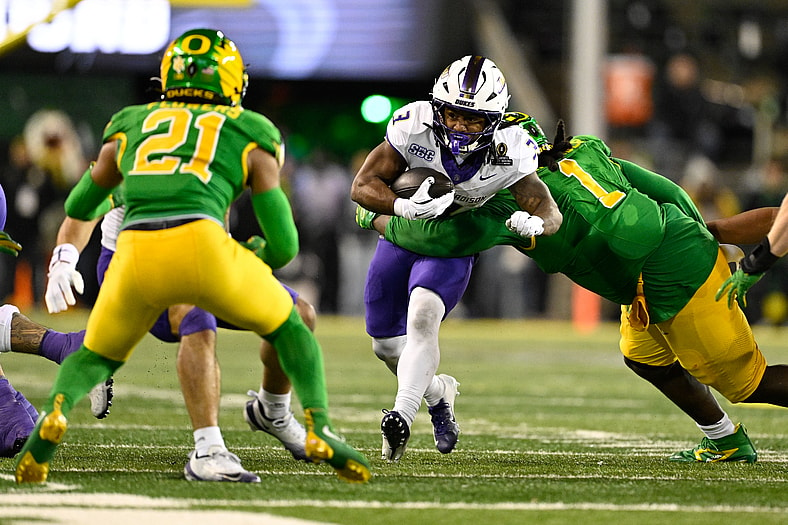
All-American running back Wayne Knight is one of the elite talents that Sun Belt Conference champion James Madison is losing to the transfer portal this week. While Knight is undersized, the junior is very explosive, and that was proven when he finished sixth in the nation for rushing yards with 1,373 yards.
He is evolving into an elite talent and could be a Heisman contender in 2026 with the right program. That’s why it feels like a perfect fit if he heads to Notre Dame to replace future NFL Draft first-round pick Jeremiyah Love.
Lincoln Keinholz to USF Bulls
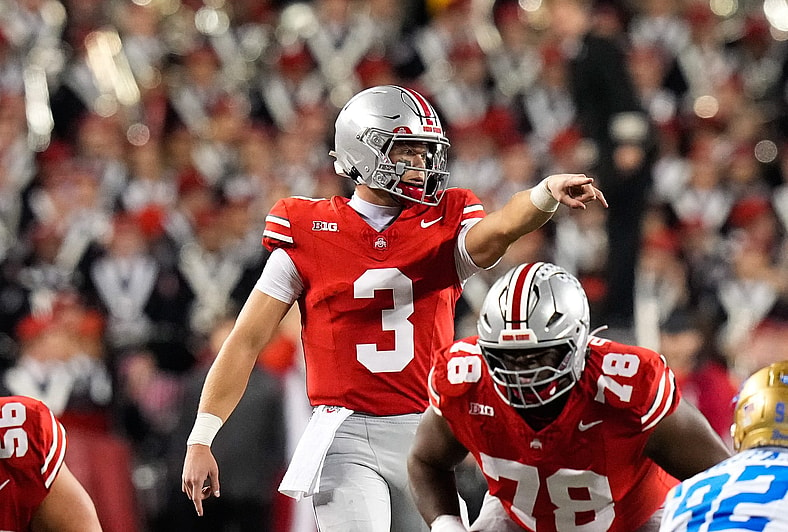
Following their devastating loss to Miami in the college football playoffs, backup QB Lincoln Keinholz was the first player to jump ship and leave Ohio State for the transfer portal. And it is understandable why, since he is stuck behind freshman Heisman finalist Julian Sayin.
However, he made Sayin work into the late summer to earn the starting job and has a reputation as a great locker room presence and leader. With offensive coordinator Brian Hartline headed to USF to be their new head coach, it would not be a surprise if Keinholz followed to be the new starting QB.
Sam Leavitt to Florida Gators
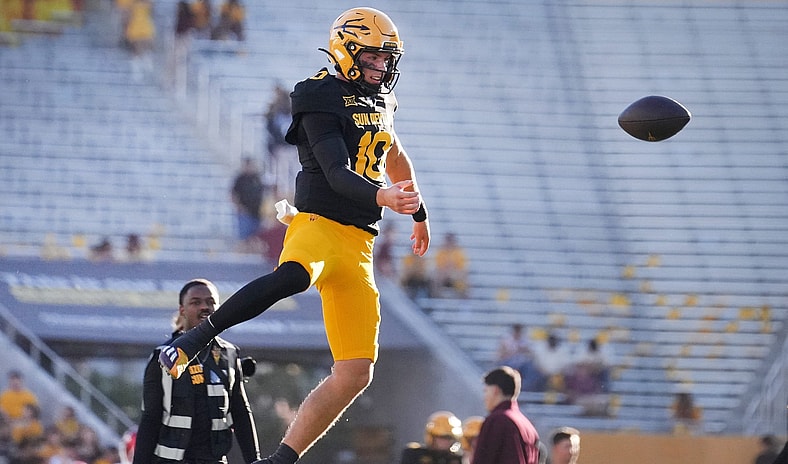
Entering the 2025 season, Arizona State signal-caller Sam Leavitt was seen as one to watch as he was primed for a big breakout season. However, a season-ending foot injury limited him to just seven games. Nevertheless, the sophomore is very smart with a football, has a good arm, and is strong at processing plays before the snap. Plus, he is also dangerous scrambling or tucking the ball and running.
With former Tulane coach Jon Sumrall taking over at Florida, look for the Gators to make a big splash by landing Leavitt.
Quintrevion Wisner to Baylor Bears
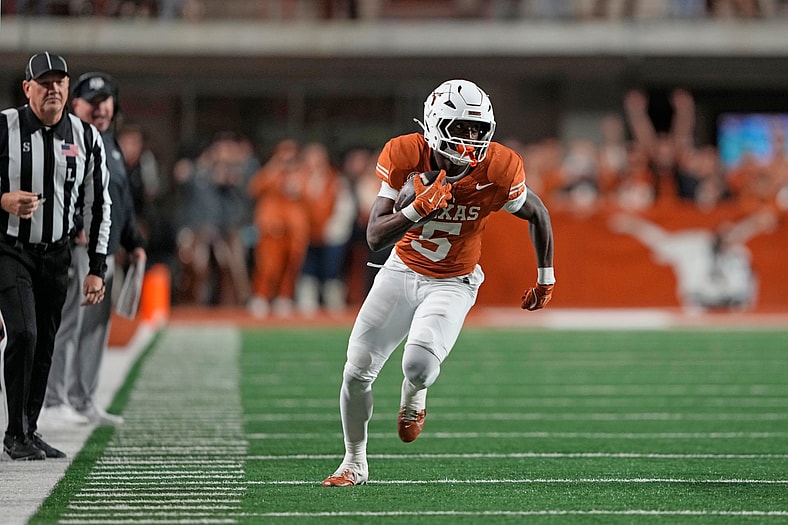
There has been a stunning mass exodus of Texas running backs into the transfer portal. The most notable of them is Quintrevion Wisner. The junior had a down season in 2025 as hamstring injuries limited him to just nine starts. However, in 2024, he posted 1,067 rushing yards, reeled in 311 passing yards on 44 receptions, and also had six touchdowns from scrimmage.
The Texas native is sure to draw interest from around the country. However, he will probably stay close to home again and will head to Baylor in the transfer portal.
Rocco Becht to Penn State Nittany Lions
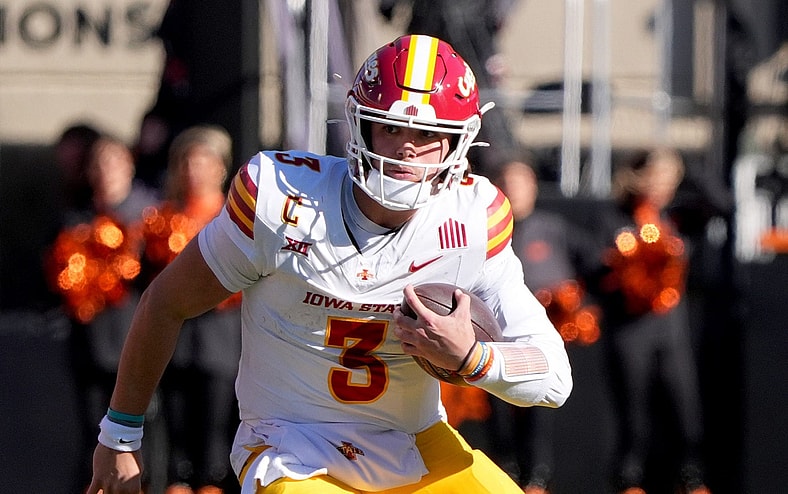
Iowa State veteran Rocco Becht regressed in year four. After posting career highs of 3,505 passing yards, 33 total TDs, and 318 yards on the ground in 2024, his numbers were down for an 8-4 Cyclones team. However, he is tough, gritty, and is good at extending plays.
While he is a little undersized for the position, doesn’t have a big arm, and he has some decision-making issues, he is a very talented player. With his Cyclones now overseeing things at Penn State, don’t be surprised if Becht reunites with Matt Campbell in State College.
Dylan Raiola to LSU Tigers
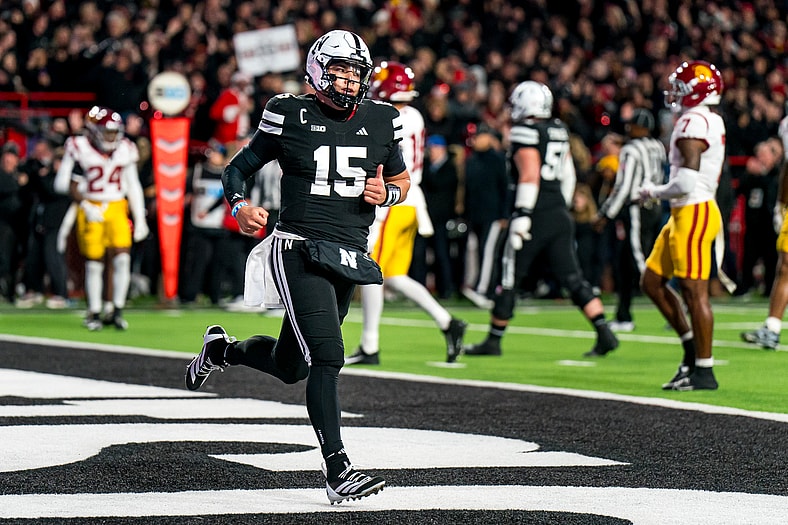
There was a lot of hype surrounding former five-star recruit Dylan Raiola when the hopes of Nebraska’s football program were foisted on his sizable shoulders two years ago. He has an NFL build, arm, and accuracy for the next level. However, he is a classic pocket passer who isn’t very mobile.
Nevertheless, with the right coordinator and QB coach, he has the potential to be a Heisman candidate in his final two seasons. With Lane Kiffin taking over at LSU, they are sure to make a big splash in the transfer portal. Raiola will be that major move.
Isaac Brown to Miami Hurricanes
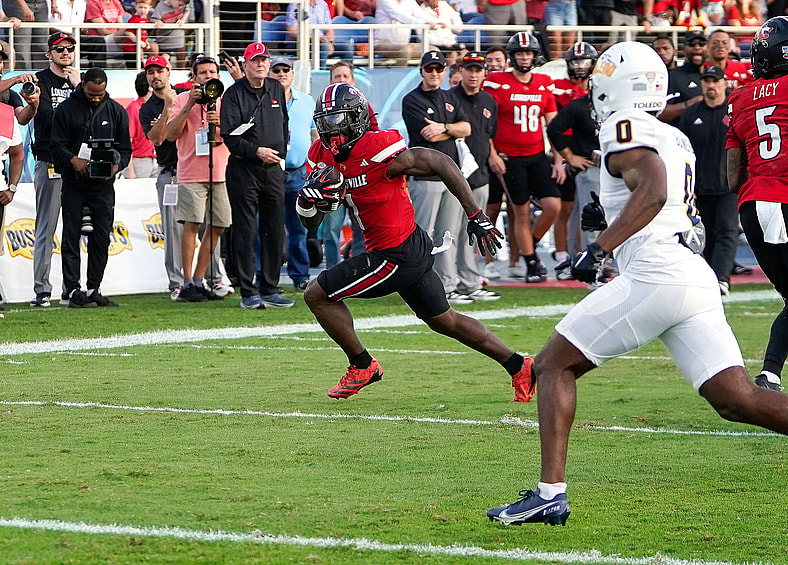
Stud Louisville running back Isaac Bown is one of the best RB’s in the latest transfer portal. He was limited to nine games in 2025 and rushed over 60 times less than the previous season because of a lower leg injury suffered in November. However, in 2024, he had a breakthrough season as he rushed for 1,173 yards and 11 touchdowns. His 7.1 yards per carry on 165 rushes was among the best in the entire nation among starting backs.
Considering his Miami roots, don’t be surprised if he heads to the Hurricanes to possibly replace Mark Fletcher Jr.
Drew Mestemaker to Oklahoma State Cowboys
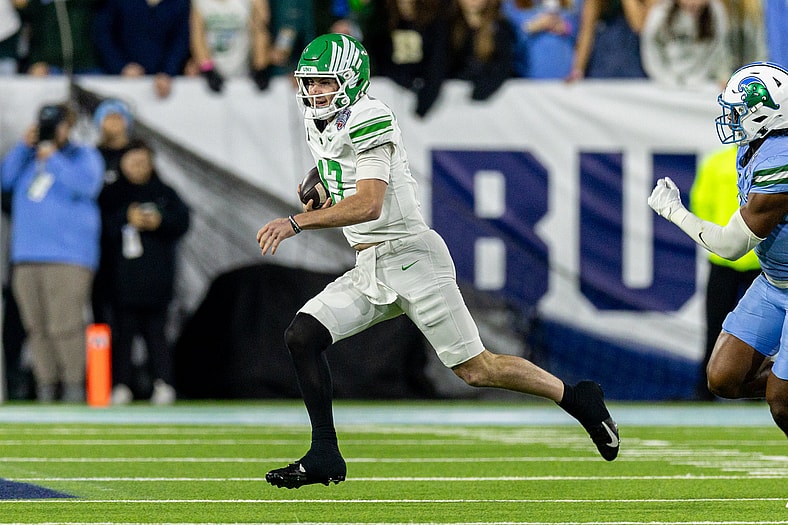
North Texas QB Drew Mestemaker had a huge season for the Mean Green in 2025. Leading the nation in passing yards with 4,129. That was over 400 more than the second-place finisher. He was also tied for second with 31 TD passes.
He could arguably be the best QB in the transfer portal. So he will draw a ton of interest. However, the current rumors suggest the Texas native is headed to Oklahoma State to play for new head coach Eric Morris. Who just so happens to be his former coach at North Texas.
Byrum Brown to Auburn Tigers
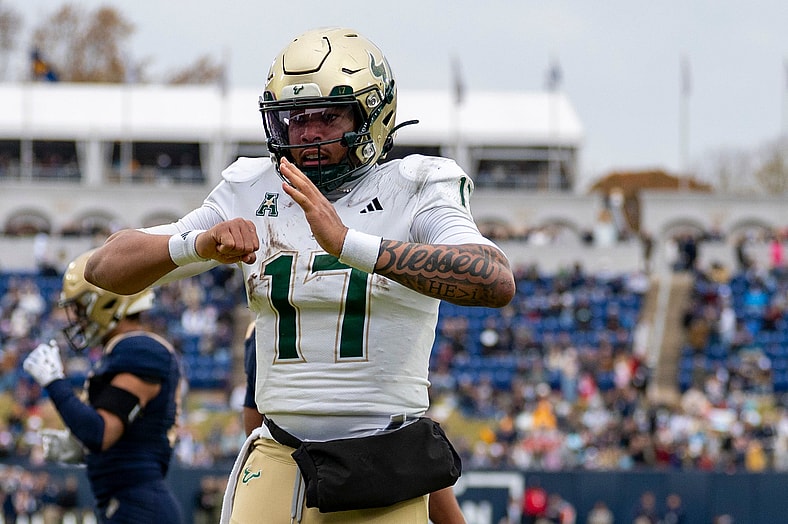
South Florida veteran Byrum Brown has a ton of potential if he can get into a program that maximizes his talents after four seasons with the Bulls. This past season, he led the team to a rock-solid 9-4 record. Throwing for 3,158 yards with 28 touchdowns and seven interceptions. But most importantly, he also ran for just over 1,000 yards in 2025.
With his former coach, Alex Golesh, taking over at Auburn, it would make sense if he followed him to be the new Tigers head coach.
Nick Marsh to Ohio State Buckeyes

Ohio State is sure to lose star receiver Carnell Tate to the NFL Draft after a huge breakout season in 2025. While receiver guru Brian Hartline is leaving the program, the Buckeyes will still hold a lot of appeal to stud receivers in the transfer portal. That is why the school replacing Tate with Michigan State sophomore Nick Marsh makes a ton of sense.
While his stats from his first two years don’t jump off the page, he has great size and potential. It is why he is seen as one of the best receivers in the portal. With Julian Sayin throwing passes to him in 2026, he could have a similar breakout year as Tate.
Cam Coleman to Texas Longhorns
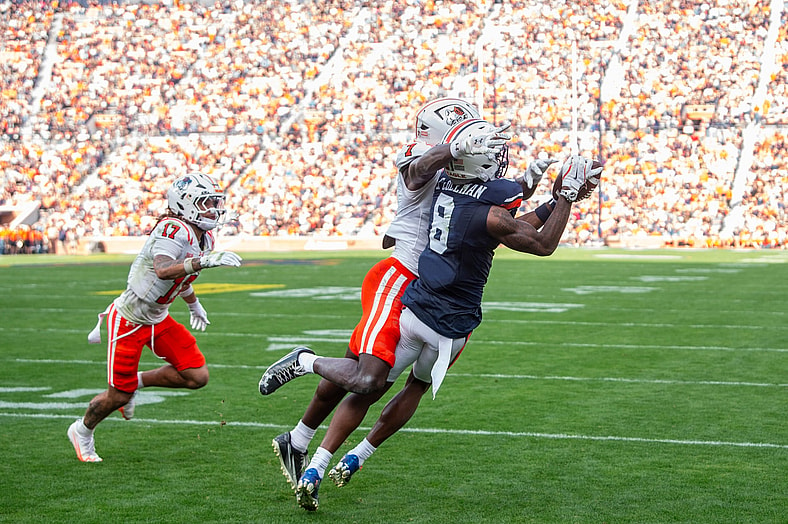
The Texas Longhorns emerged almost immediately as a top suitor for Cam Coleman after reports surfaced that he would enter the transfer portal. With the 6-foot-3 wideout prioritizing both NIL (reportedly a $2 million price tag) and the opportunity to play with a proven quarterback, there are only a few viable landing spots. Arch Manning recently reduced his NIL earnings from the school’s revenue-sharing pool to facilitate Texas bringing in more talent. Coleman will likely wind up in Austin, giving the Longhorns’ offense a true No. 1 wide receiver with both Manning and Coleman able to turn a great year into being top picks in the 2027 NFL Draft.
Related: Cam Coleman Transfer Landing Spots
John Henry Daley Heads to Michigan Wolverines
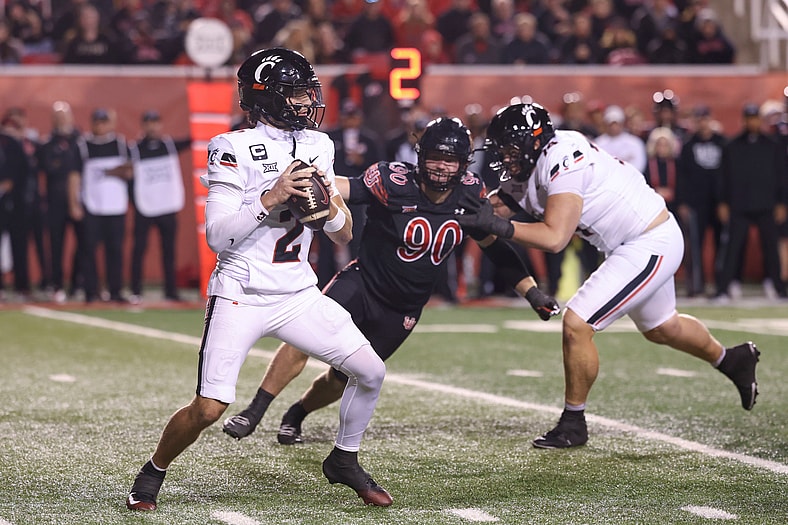
Since taking over as the Michigan Wolverines’ coach, Kyle Whittingham has been raiding the state of Utah for talent. After poaching BYU’s Jay Hill to take over as the Wolverines’ defensive coordinator, the duo can now turn their focus to luring elite talent out of the state. John Henry Daley, fresh off earning first-team All-Big 12 honors in 2025, is coming off a breakout year with 17.5 tackles for loss and 11.5 sacks in 11 games. The 6-foot-4 edge rusher would provide Michigan’s defense with a blue-chip pass rusher who could be even more impactful next season with Hill as his play-caller.
Caleb Hawkins Lands with Oklahoma State Cowboys
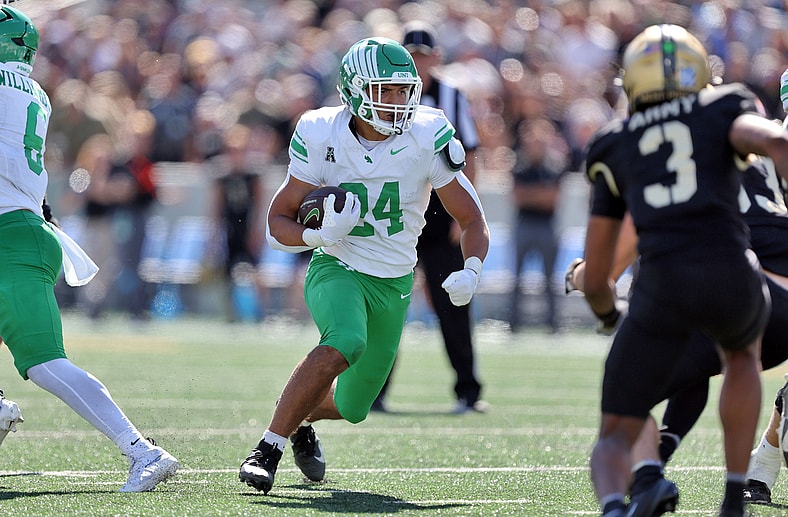
The raiding of North Texas will continue by former head coach Eric Morris. In addition to pulling in his former quarterback, Drew Mestemaker, Morris will bring his entire backfield to the Oklahoma State Cowboys’ offense for the 2026 season. Caleb Hawkins, the 6-foot-2 running back, earned first-team American Rookie of the Year honors in 2025 after putting up 1,804 scrimmage yards with 29 total touchdowns as a freshman. He will join the Cowboys’ offense and reunite with Mestemaker and Morris, even as Texas was reportedly focusing on another running back.
Chaz Coleman Returns Home to Ohio State Buckeyes
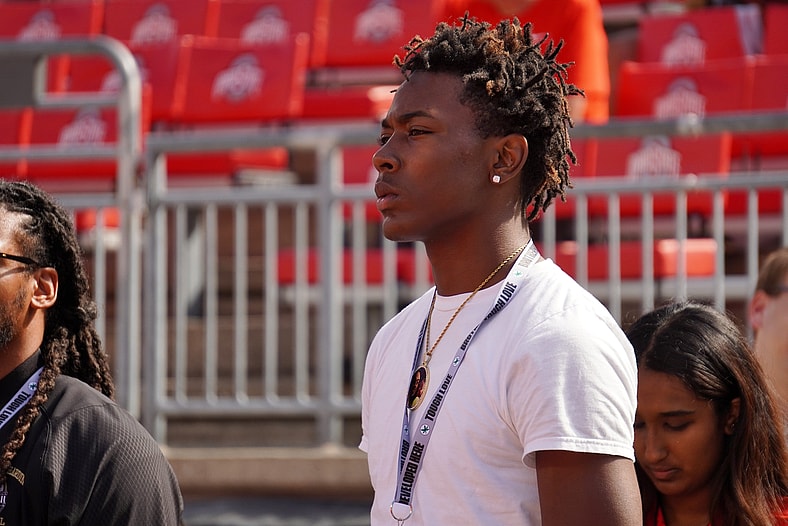
It is going to be a do-over for the Ohio State Buckeyes. Chaz Coleman starred at Warren G. Harding High School, but the Buckeyes seemed to pass him over, and that is when the Penn State Nittany Lions swooped in. Fortunately for Ryan Day and Matt Patricia, they get to correct their mistake after Coleman entered the college football transfer portal. While he only had 3 tackles for loss and 1 sack as a freshman, the 6-foot-4 edge defender stood out in his opportunities. The Buckeyes will bring him back home, and by 2027, he will be a first-team All-Big Ten edge rusher.
DJ Lagway to the Baylor Bears
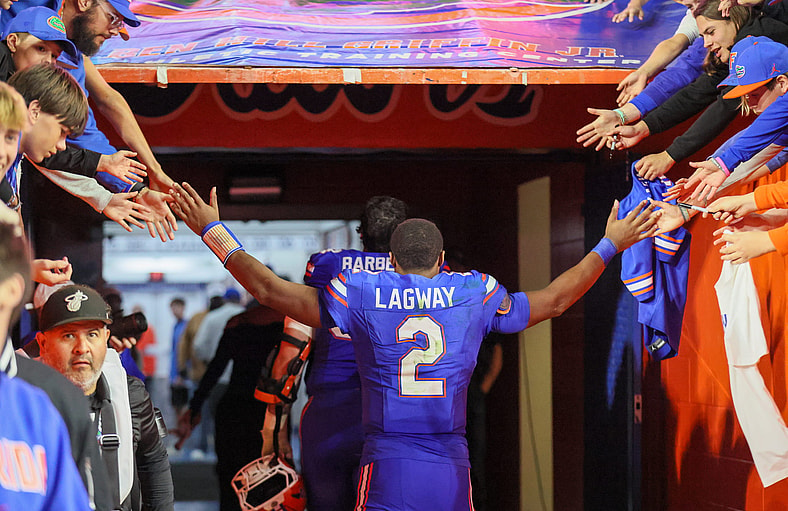
No one can fault DJ Lagway for trying to make it work with the Florida Gators, a program that could have positioned him for stardom. Unfortunately for him, things just did not work out. The young quarterback needs a change of scenery and would greatly benefit from going to a school where the expectations are more reasonable. The Baylor Bears offer that, and it would be an opportunity to play for the program his father did years ago. If all goes well, maybe we see a Lagway-led Baylor program in the Big 12 Championship Game next December.
Brendan Sorsby to Texas Tech
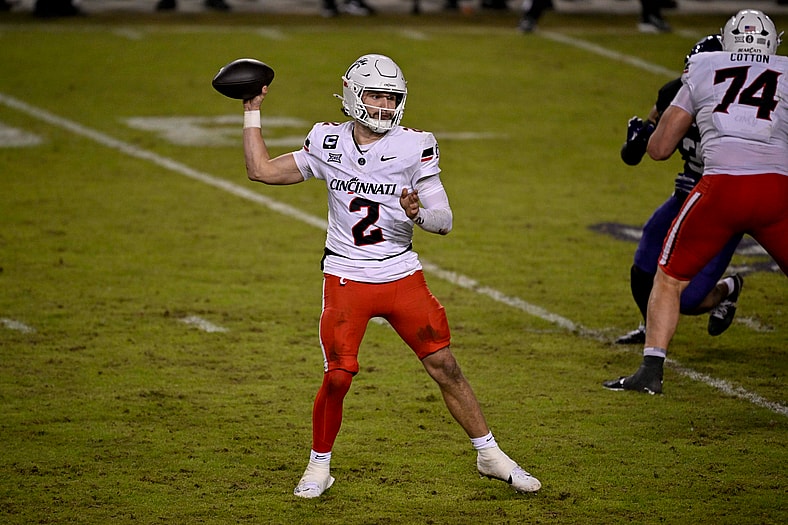
A brutal showing and exit in the College Football Playoff will likely push the Texas Tech Red Raiders to be even more aggressive in the portal for a top quarterback. While Cincinnati signal-caller Brendan Sorsby might not be on that Sam Leavitt tier of passers, he is not too far behind. Across his time at Indiana and Cincinnati, he has posted a 42–10 TD–INT line with an impressive passing touchdown rate, and he has rushed for over 1,300 yards and 22 touchdowns in his career. He is the caliber of dual-threat quarterback who can truly elevate the Red Raiders’ offense next season.
Read More: Staggering Cost Expected to Land Top QBs in College Football Transfer Portal
Rasheem Biles Joins Ohio State
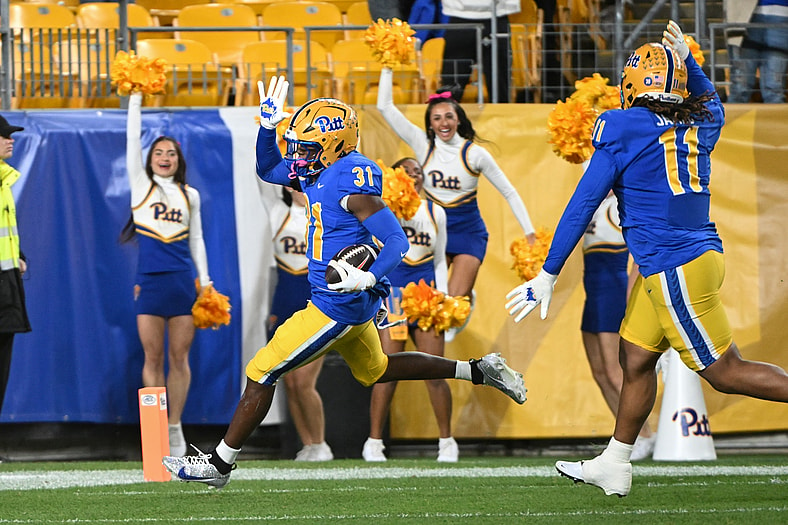
Yes, after losing in the College Football Playoff, we expect the Buckeyes to go all-out in the transfer portal. It also helps that one of the top defenders available, All-ACC linebacker Rasheem Biles, is an Ohio native who reportedly has real interest in playing for the Buckeyes. We anticipate that Ohio State will come out of January with several top defenders, bringing both Coleman and Biles back home.
Mateen Ibirogba Heads to Oregon
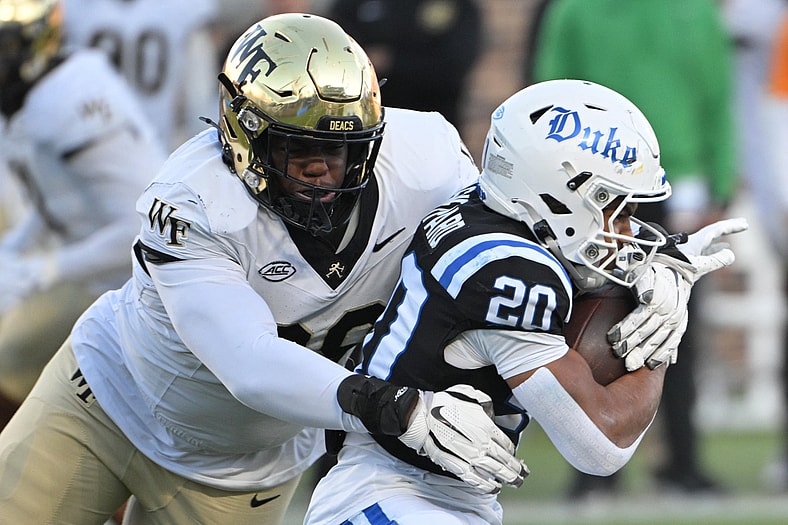
The Oregon Ducks’ defense is about to lose a lot of talent to the 2026 NFL Draft, including projected first-round pick A’Mauri Washington. Dan Lanning’s program has done an excellent job in recent seasons at getting defensive tackles to the pros, which is just another selling point they can offer to Mateen Ibirogba. Coming off a season where he was one of the most disruptive interior defensive linemen in the ACC, the 6-foot-4 standout can step in and become an integral part of Oregon’s defensive success next season.
Omarion Miller Heads West to USC Trojans
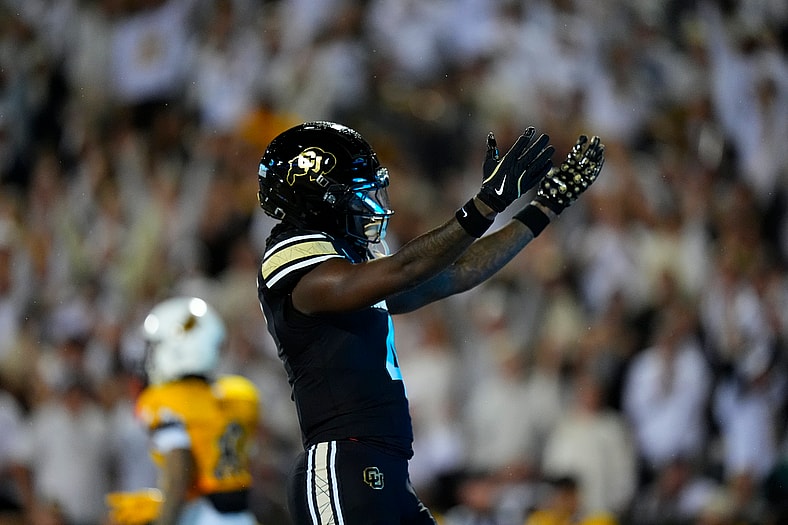
With Makai Lemon poised to be a top-20 pick in the 2026 NFL Draft, Lincoln Riley and the USC Trojans need to find a new No. 1 receiver. Cam Coleman would be great, but there are enough needs on the Trojans’ roster that it would probably be wise to spread the money around a bit more. Consequently, USC goes one tier down among the available receivers in the portal and will land Omarion Miller. He earned second-team All-Big 12 honors this past season, averaging an eye-popping 18 yards per reception with 808 receiving yards and 8 touchdowns. He will have a much better quarterback at USC, and functioning as the No. 1 wideout in the Trojans’ offense could propel him to becoming a top-50 pick next year.
Carius Curne to Ole Miss

With the money saved by not engaging in a bidding war for Lane Kiffin, the Ole Miss Rebels should remain major players in the college football transfer portal. We also suspect that with the hiring of Frank Wilson, the former interim coach at LSU, the Rebels’ new running backs coach will pull some of the elite talent out of Louisiana. Offensive lineman Carius Curne will likely turn down an opportunity to return home to Arkansas, instead taking a rewarding NIL deal to start on the Rebels’ offensive line next season.
NIL
Sugar Bowl Highlights: Ole Miss Knocks Off Georgia in CFP Sugar Bowl Thriller

Live Coverage for this has ended
12:25a ET
Georgia with a much-needed answer
11:45p ET
Ole Miss hits go-ahead field goal
11:09p ET
Ole Miss recaptures 3-point lead
11:07p ET
Ole Miss’ discipline leads to TD
10:38p ET
Georgia’s fake punt keeps drive alive
10:33p ET
Georgia returns fumble for a touchdown
10:32p ET
Kewan Lacy finds the end zone
9:18p ET
Gunner Stockton scores another rushing TD
9:12p ET
Georgia captures lead with first touchdown of the Sugar Bowl
9:07p ET
Ole Miss answers quickly
8:59p ET
Ole Miss kicker tops his own record
8:37p ET
Record-setting FG gives Ole Miss lead
Live Coverage for this began on 12:30a ET
-

 Motorsports2 weeks ago
Motorsports2 weeks agoRoss Brawn to receive Autosport Gold Medal Award at 2026 Autosport Awards, Honouring a Lifetime Shaping Modern F1
-

 Rec Sports2 weeks ago
Rec Sports2 weeks agoStempien to seek opening for Branch County Circuit Court Judge | WTVB | 1590 AM · 95.5 FM
-

 NIL3 weeks ago
NIL3 weeks agoNike Signs 10 LSU Athletes to NIL deals
-

 Rec Sports2 weeks ago
Rec Sports2 weeks agoPrinceton Area Community Foundation awards more than $1.3 million to 40 local nonprofits ⋆ Princeton, NJ local news %
-
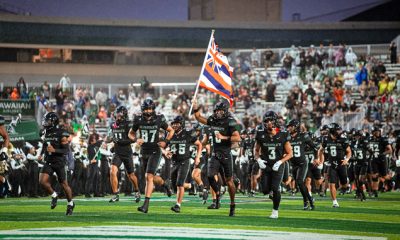
 NIL2 weeks ago
NIL2 weeks agoDowntown Athletic Club of Hawaiʻi gives $300K to Boost the ’Bows NIL fund
-

 NIL2 weeks ago
NIL2 weeks agoKentucky AD explains NIL, JMI partnership and cap rules
-
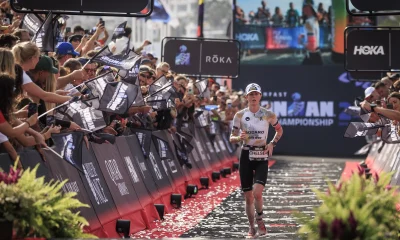
 Sports2 weeks ago
Sports2 weeks agoYoung People Are Driving a Surge in Triathlon Sign-Ups
-
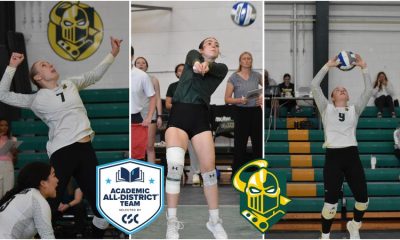
 Sports2 weeks ago
Sports2 weeks agoThree Clarkson Volleyball Players Named to CSC Academic All-District List
-

 Rec Sports3 weeks ago
Rec Sports3 weeks agoTeesside youth discovers more than a sport
-

 Motorsports3 weeks ago
Motorsports3 weeks agoPRI Show revs through Indy, sets tone for 2026 racing season
































